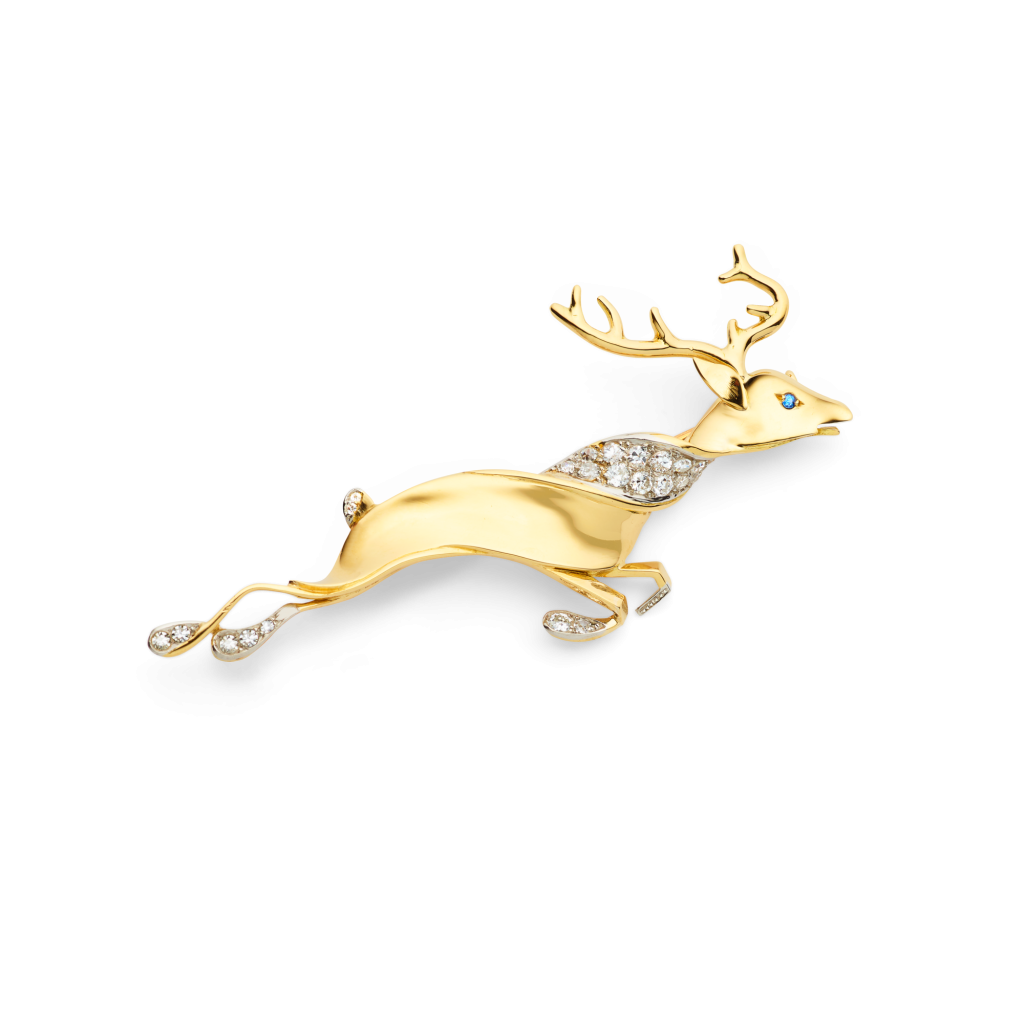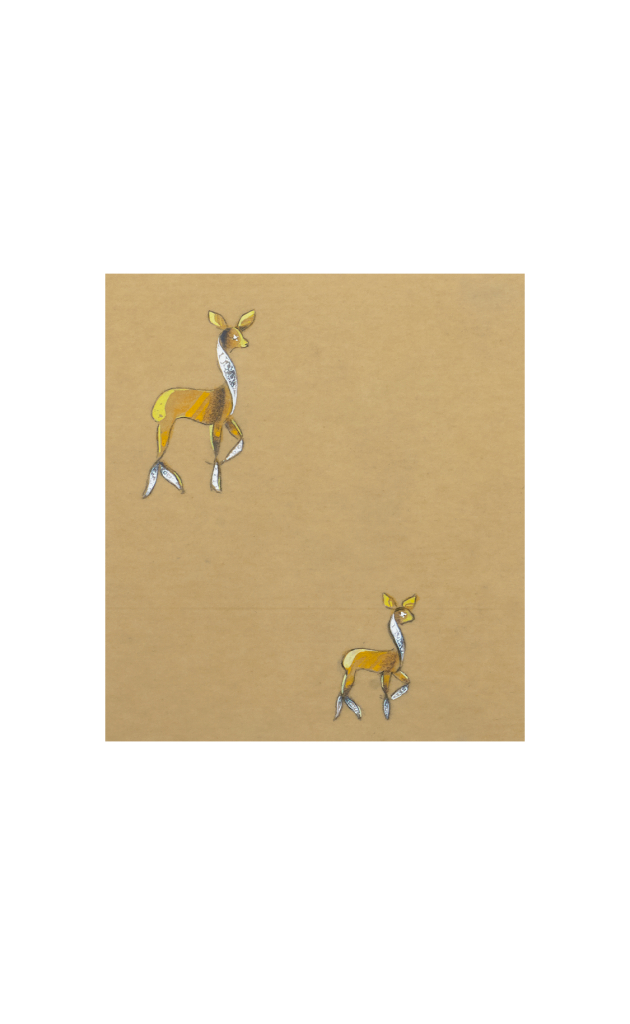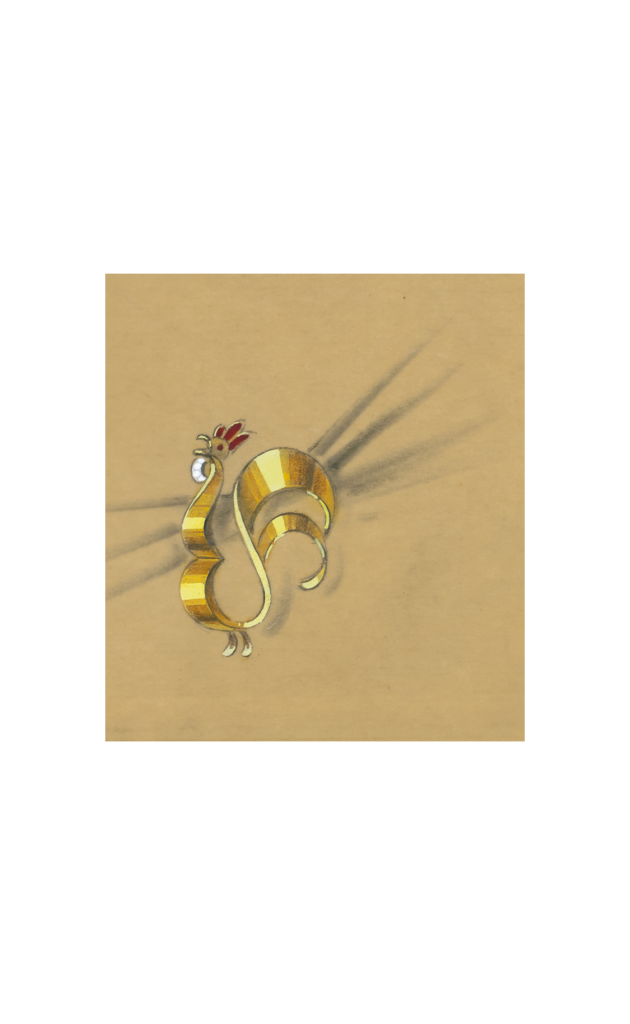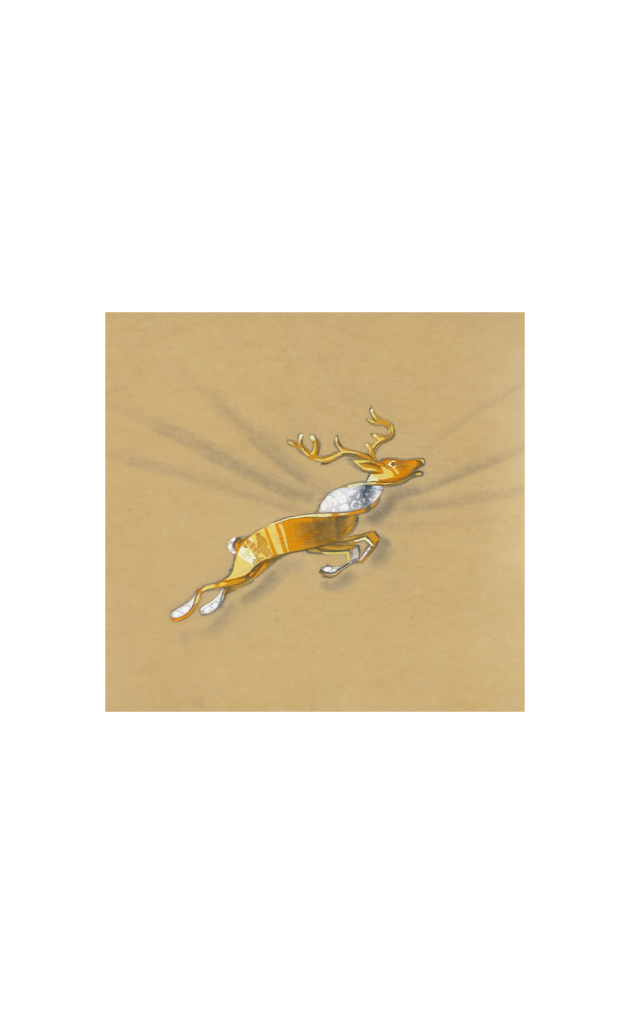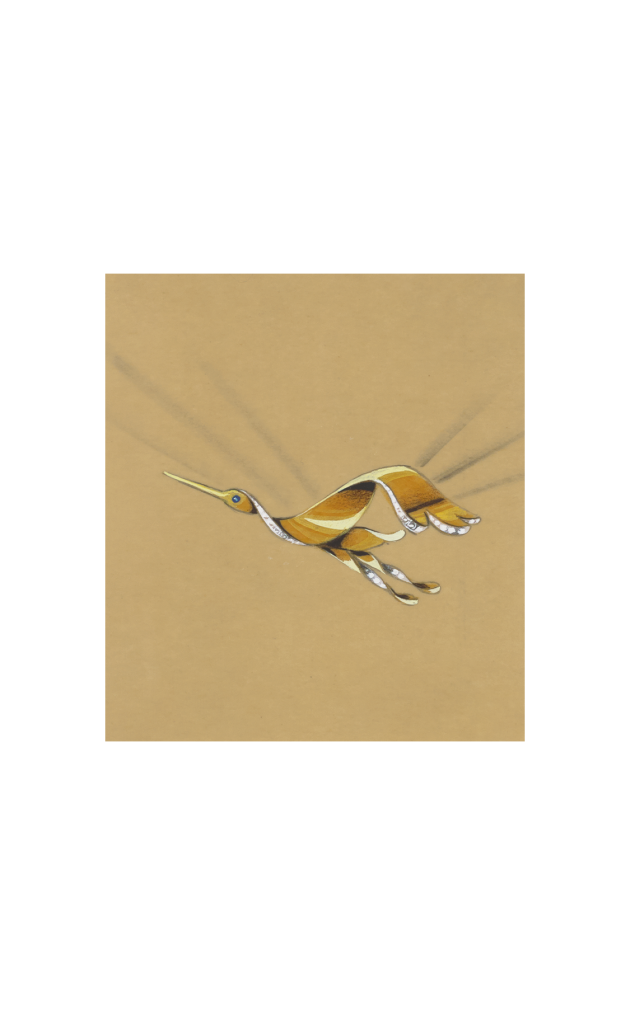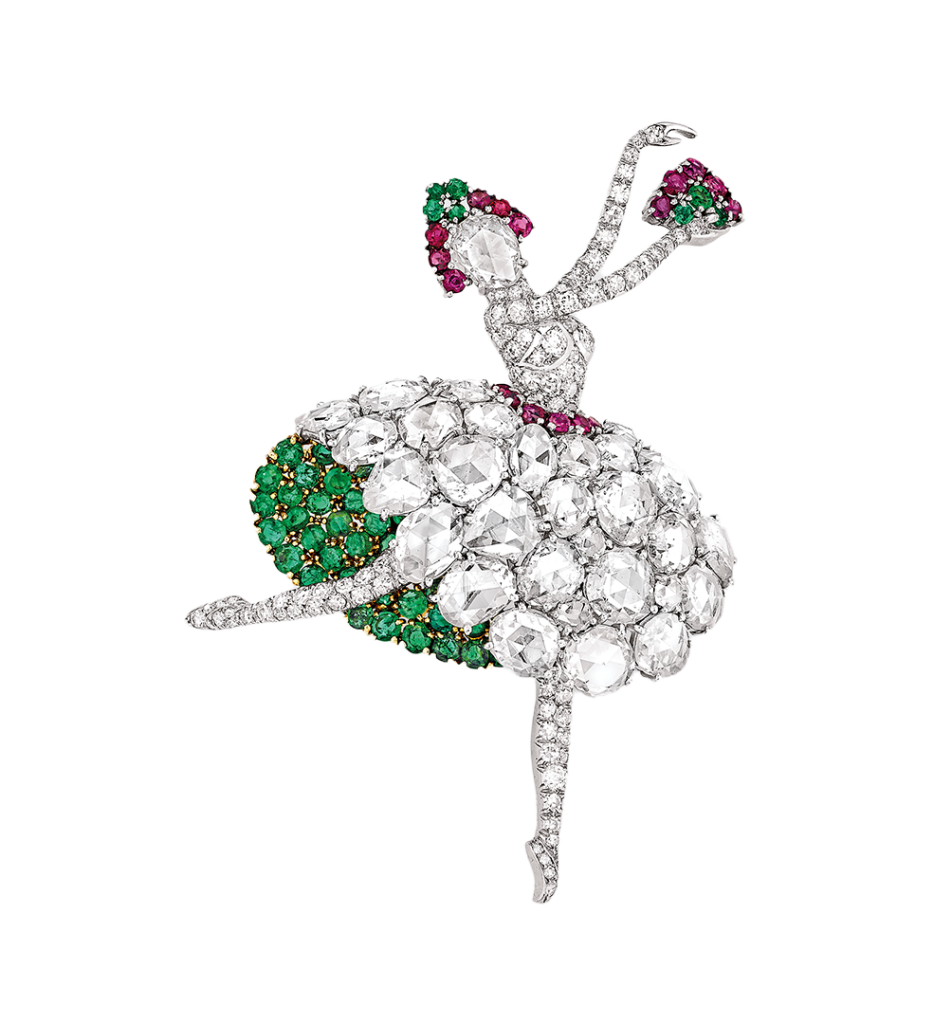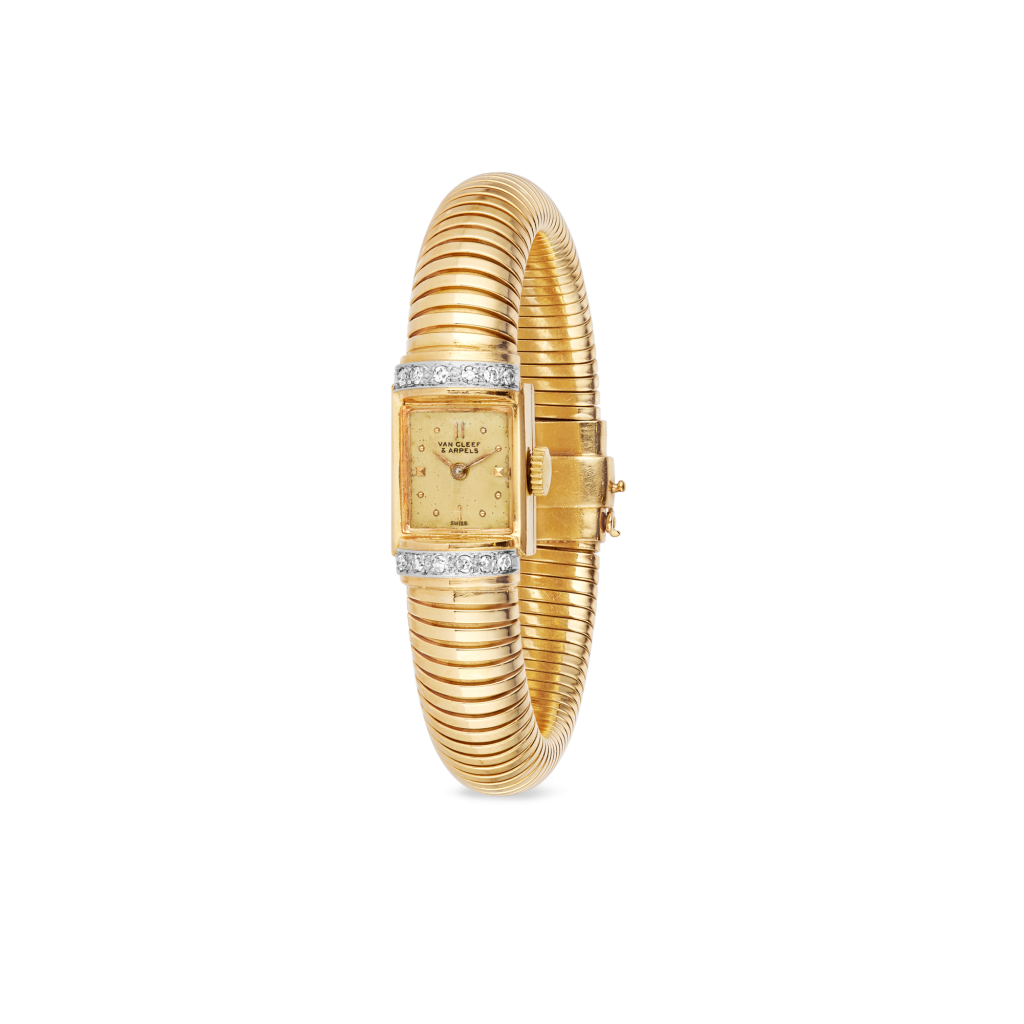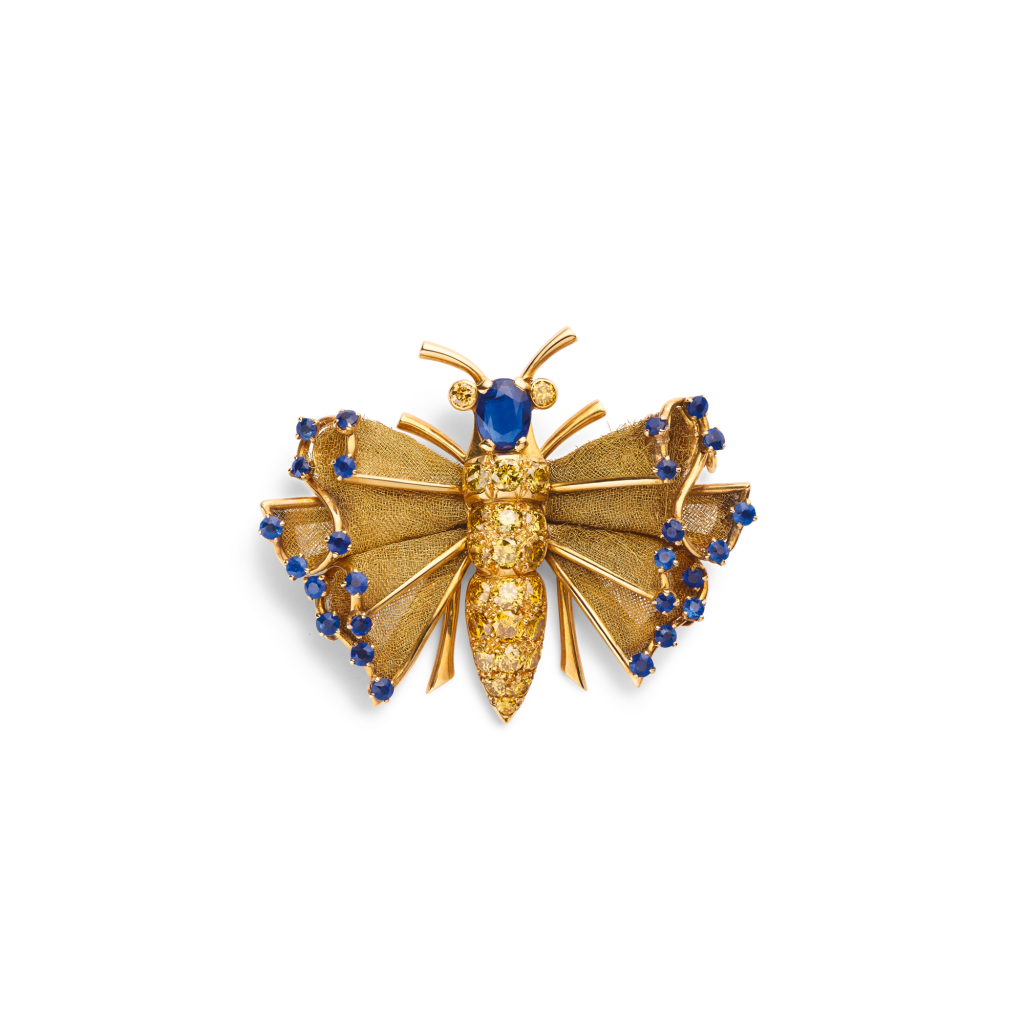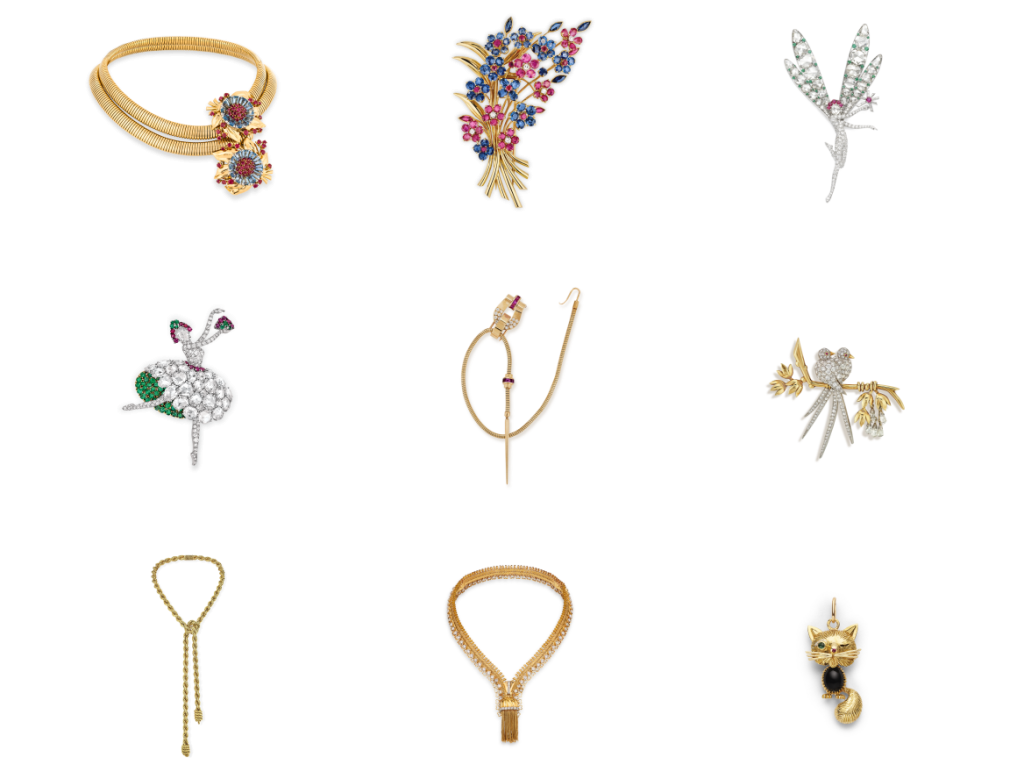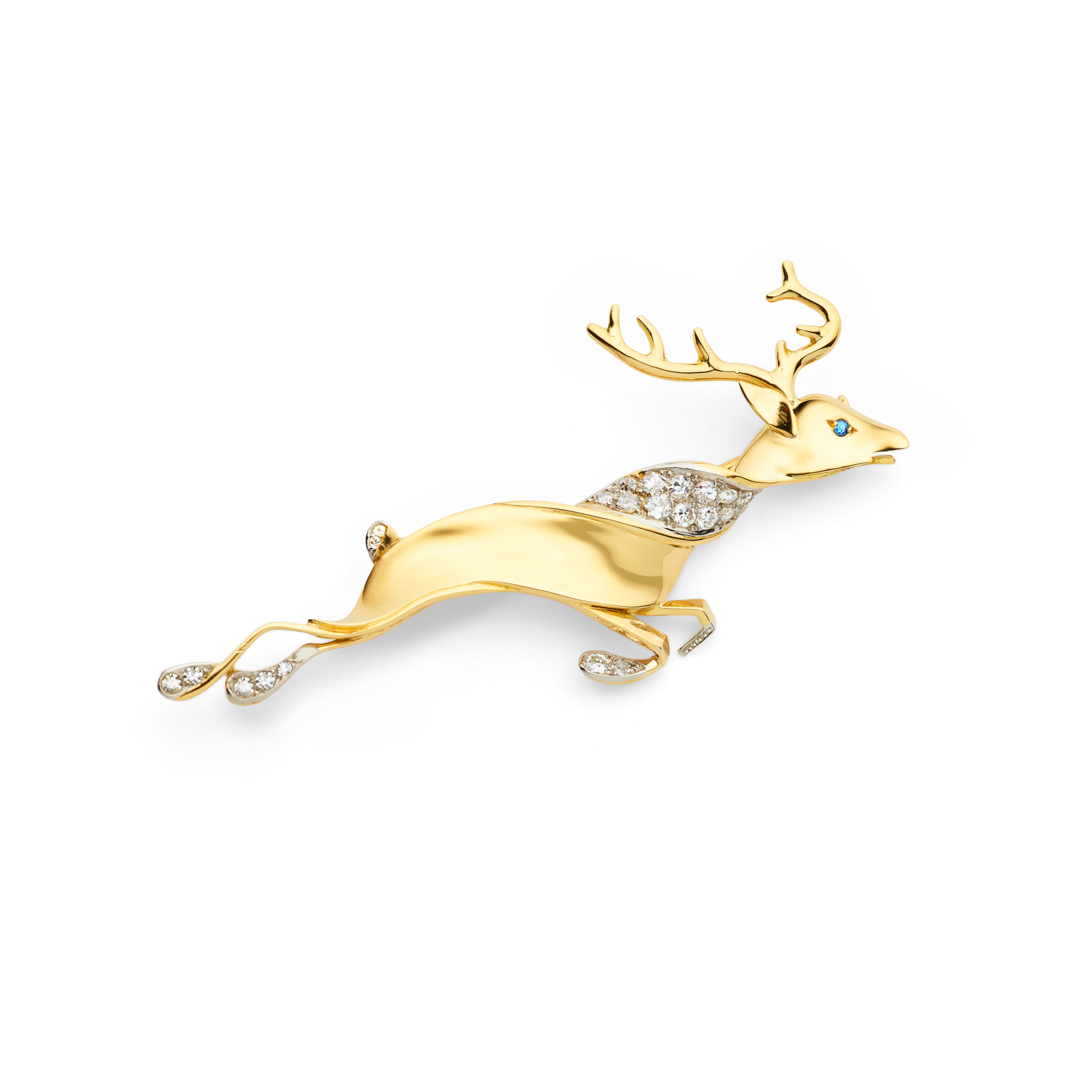
Deer clip
Creation details
- Creation year 1946
- Usage Clip
- Dimensions 70 × 30 mm
The flexibly molded metal plaques used to capture the silhouette of the leaping stag in this clip confer a sense of movement and dynamism.
The upper side in polished yellow gold contrasts with the underside in platinum pave-set with claw-set diamonds in an interplay suggestive of the animal’s two-tone coat. Its eye is depicted with a claw-set circular sapphire with a notch on either side.
A vast repertoire of animals
This usage of metal was first seen in 1945 and subsequently applied to a wide repertory of animals, endowing them with life. The first clip depicted a peacock with richly colored plumage thanks to the use of round emeralds and sapphires. That was followed by a swan spreading its wings, a doe with a golden coat dotted with diamonds, a cockerel with a ruby comb crowing madly while strutting forth, a leaping deer like the stag in the clip seen here and a stork in flight.
DRAWINGS OF ANIMAL CLIPS
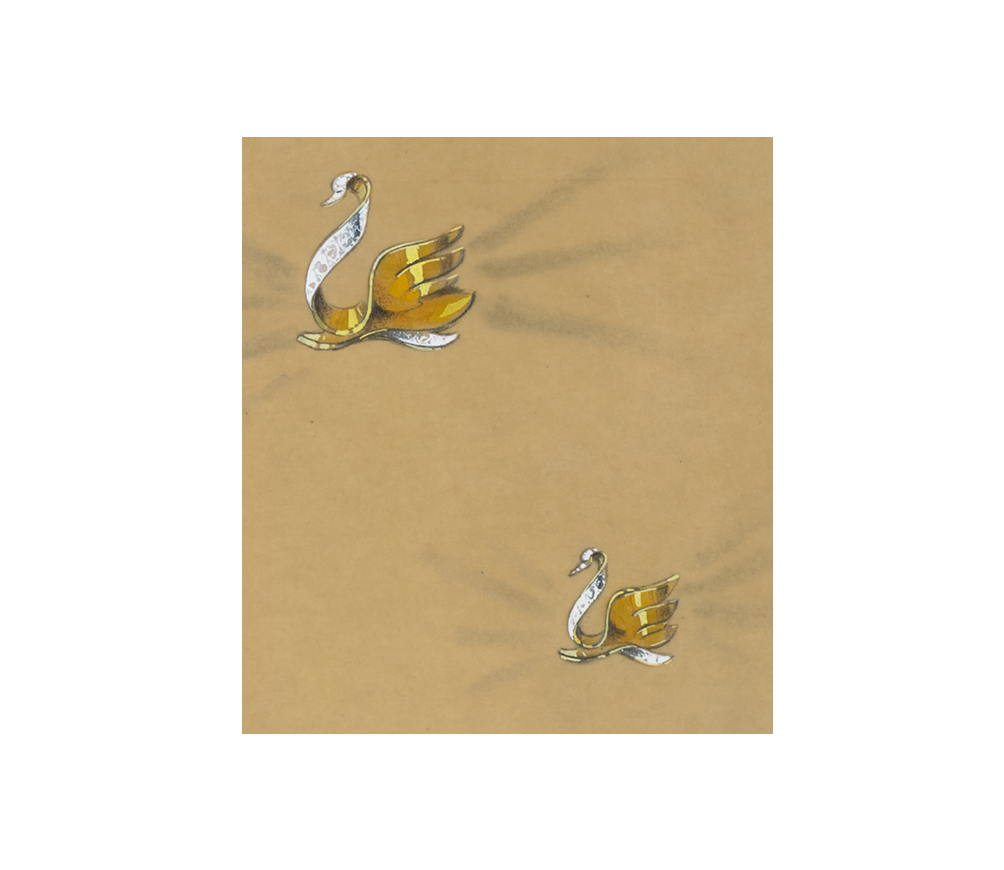
Thereafter, this technique of molded metal plaques was applied to a more figurative iconography: to Dancer clips as well as pieces depicting famous literary couples. Movement, dance steps, and theatrical poses were transcribed through small yellow gold plaques with beveled edges.
Adapting to the economic constraints of the Occupation
The sobriety of the Stag clip’s modeling is in keeping with the more concise style that took hold in the first half of the 1940s. This style was the result of the economic and material problems encountered by designers during the Occupation. “Our great jewelers adapted admirably to the circumstances […]. Wider use was made of bare metal surfaces. Simplicity and discreet elegance are appropriate today, precious stones being […] rarer.”1“La fabrication des bijoux,” Les Actualités Mondiales (January 1, 1941). Paris, the Institut National de l’Audiovisuel (INA) Archives. Taking advantage of innovations born of necessity, the Stag clip illustrated a new perspective and a diversification of the animal repertory in the jewelry arts during the 1940s.
To go deeper
